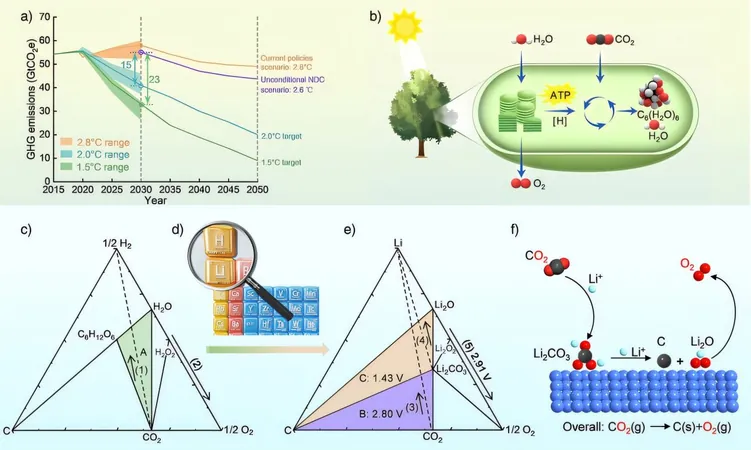
Revolutionary Electrochemical Process Turns Carbon Dioxide into Oxygen: A Game-Changer for Space Exploration!
2025-03-24
Author: Li
Introduction
In a groundbreaking development that could revolutionize our approach to carbon emissions and pave the way for sustainable living in space, a research team from Nanjing University, in collaboration with Fudan University, has unveiled an innovative electrochemical process that can effectively split carbon dioxide (CO2) into oxygen and elemental carbon.
Significance of the Discovery
This significant advancement not only addresses climate change concerns but also opens up exciting possibilities for future human habitats beyond Earth.
Efficient Operation
As reported in the prestigious journal Angewandte Chemie International Edition, this pioneering process stands out because it operates efficiently under conditions that do not require the extreme pressures or temperatures typically necessary for such reactions.
Challenges with Traditional Photosynthesis
Currently, our planet's leafy flora excels at converting CO2 into oxygen and glucose through the process of photosynthesis. However, the traditional method hinges on the role of hydrogen atoms and is not particularly efficient.
The Innovative Electrochemical Process
The innovative team, led by Ping He and Haoshen Zhou, found a new 'mediator' for this electrochemical reaction: lithium. They engineered a specialized electrochemical device equipped with a gas cathode that utilizes a nanoscale cocatalyst composed of ruthenium and cobalt (RuCo), paired with a metallic lithium anode.
Transformation Process
When CO2 is introduced to the cathode, it undergoes a transformative two-step electrochemical reduction with lithium. The process first yields lithium carbonate (Li2CO3), which is then further processed to generate lithium oxide (Li2O) and elemental carbon.
Oxygen Generation Stage
Crucially, the next stage involves an electrocatalytic oxidation process, whereby Li2O is converted into lithium ions and oxygen gas (O2). Remarkably, thanks to the optimization of the RuCo catalyst, this process can achieve an astounding oxygen yield of over 98.6%.
Testing in Varied Conditions
Testing of this method has also included a variety of gas mixtures, simulating challenging conditions such as flue gases and even the Martian atmosphere.
Potential Impact on Space Exploration and Earth
This groundbreaking advancement highlights a dual benefit: it could provide a strong solution to combatting Earth's climate crisis while simultaneously facilitating human exploration and potential habitation on other planets.
Conclusion
As we continue to grapple with climate change, the potential to turn a harmful pollutant into breathable oxygen could indeed be a game-changer for our species.



 Brasil (PT)
Brasil (PT)
 Canada (EN)
Canada (EN)
 Chile (ES)
Chile (ES)
 Česko (CS)
Česko (CS)
 대한민국 (KO)
대한민국 (KO)
 España (ES)
España (ES)
 France (FR)
France (FR)
 Hong Kong (EN)
Hong Kong (EN)
 Italia (IT)
Italia (IT)
 日本 (JA)
日本 (JA)
 Magyarország (HU)
Magyarország (HU)
 Norge (NO)
Norge (NO)
 Polska (PL)
Polska (PL)
 Schweiz (DE)
Schweiz (DE)
 Singapore (EN)
Singapore (EN)
 Sverige (SV)
Sverige (SV)
 Suomi (FI)
Suomi (FI)
 Türkiye (TR)
Türkiye (TR)
 الإمارات العربية المتحدة (AR)
الإمارات العربية المتحدة (AR)